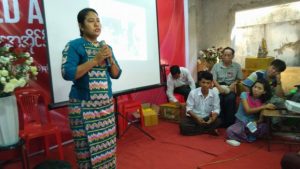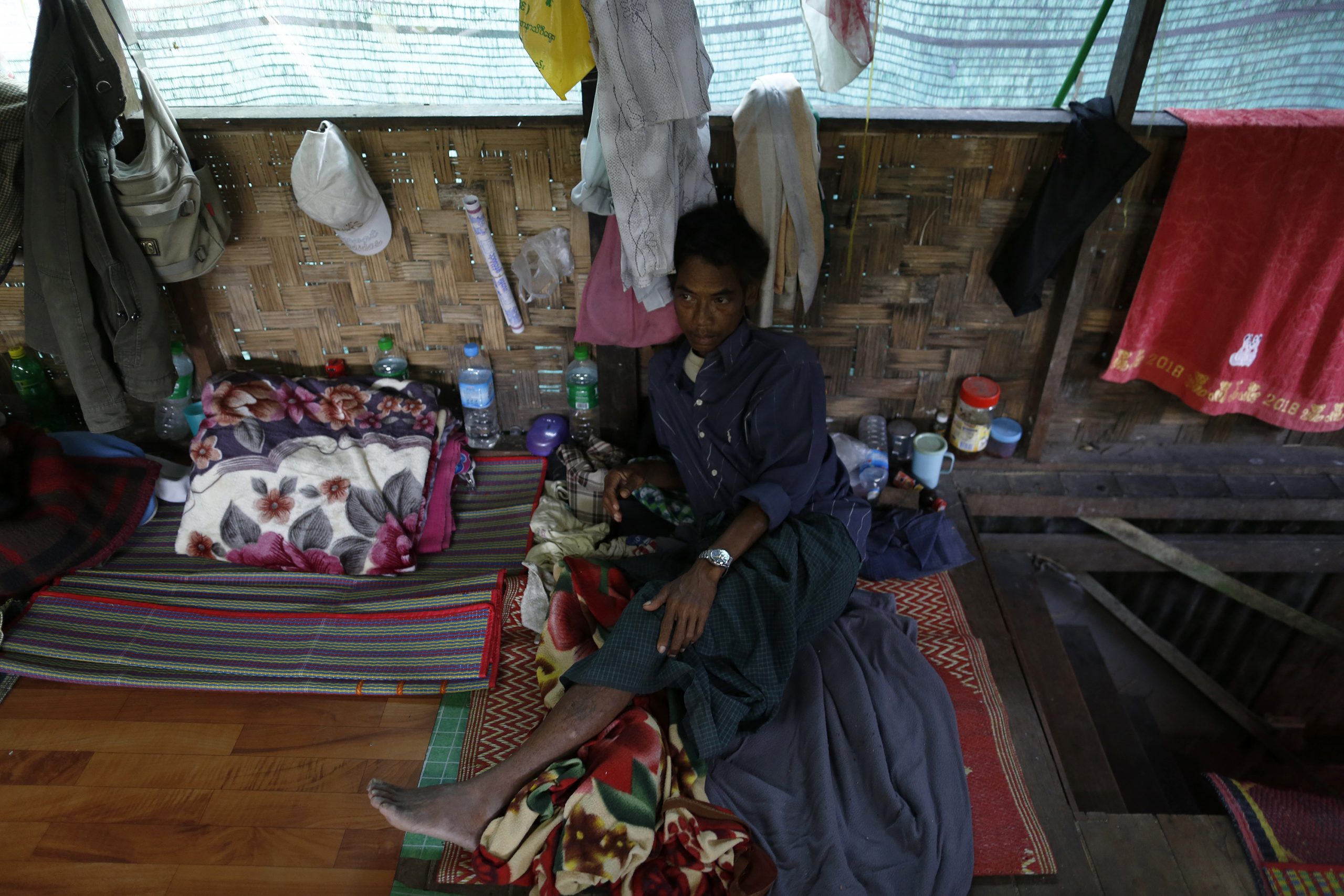As the world marks International AIDS Day, between 190,000 and 230,000 people in Burma are living with HIV, according to 2014 UN estimates. The figure puts Burma at one of the highest rates of infection in the region.
In Burma, where healthcare and sexual education initiatives receive little support, men who have sex with men (MSM), female sex workers and intravenous drug users are the most common victims of the disease. The misery is compounded by an acutely negative stigma attached to sufferers.
“People living with HIV continue to suffer discrimination in their communities to this day – for example, a child living with HIV would be treated differently from other children at school, and also likely to be kept in a separate room from other patients when they go to hospital,” said Phyu Phyu Thin, a veteran HIV activist and a parliamentary representative of the National League for Democracy.

“They are being mentally traumatised by the discrimination that they face.”
The Thein Sein government has made efforts to address the issue – in 2014, health minister Than Aung confirmed the injection of US$ 5 million into the national HIV/AIDS programme. Despite that positive step, the clinics are still struggling to meet the demand from some 160,000 patients who rely on life-saving anti-retroviral treatment (ART). This number is set to increase, as new World Health Organisation guidelines recommend ART therapy as soon as a patient tests positive for HIV.
Medicines Sans Frontieres (MSF), is the main provider of ART in Burma. The medical charity is now drastically reimagining their treatment model in an effort to best utilise the stark resources on hand. MSF says it has seen early success in what it calls ‘task-shifting’. HIV patients in a stable condition now check-in with a nurse or equivalent every six months, and pick up their medication every three, freeing up doctors to address those suffering from severe complications.
Despite this, Dr Marcel Fernandez, MSF’s medical coordinator in Burma, says the reality for those living with HIV is still bleak. Fernandez estimates that half of those suffering from HIV go without ART. He advocates for simplifying access to healthcare and fostering long-term support once an individual’s HIV-positive status is known within the wider community.
The shift has also given many patients a much needed psychological boost.
“When we tell people they no longer require in-depth medical consultations and so can be seen by a nurse, it seems to make them feel good and more confident about their health,” said Fernandez.
But in a country where men are routinely locked up under suspicion of homosexuality and sex work is criminalised, support will remain hard to come by. Coupled with a crippled education system, it becomes clear that the scurge of HIV is one that will require a multi-faceted approach.
[related]
Speaking to DVB at the Mae Tao clinic in Mae Sot, Saw Than Lwin believes the key was sexual education for young people.
“Some young people do not know how to use condoms … some try, but they have not practiced and use them incorrectly,” he said.
He added that often young people are stigmatised for carrying sexual protection, discouraging their use, adding: “For example, if I was a young person and somebody saw that I have a condom, the community may look down on me for having it,” he said.
In the 25 – 49 age bracket, HIV prevalence is highest amongst MSM patients, highlighting a need for outreach to this demographic. However it was only in August that the Mandalay Division Border and Security Affairs minister promised a ‘crackdown’ on same-sex couples. Homosexual sex is still effectively outlawed in Burma under section 377 of the Penal Code, attracting a sentence between 10 years and life imprisonment. Enforcing such laws only contributes to the stigma surrounding HIV, and pushes those at risk further toward the periphery of the healthcare system’s reach.
Despite contributing social factors, transmission across all modes is decreasing. Needle-sharing remains one of the most dangerous modes of transmission, but has still dropped significantly since 2014, according to UN estimates, from between 3,000-3,500 persons infected down to 1,500.
With a decline in transmissions, and social stigma moving slowly in the right direction, there is hope that the darkest days of HIV/AIDS in Burma may have passed. Yet with limited public resources in offer, organisations like MSF continue to be stretched thin in efforts to provide Burma’s large and diverse population of HIV/AIDs sufferers with the treatment they require.



